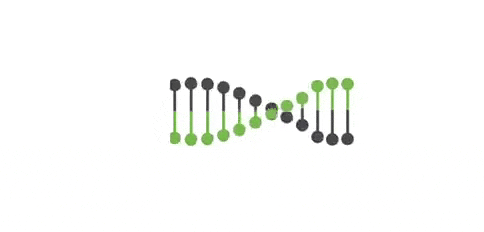
SAP Business Data Cloud: A Bold Step Forward with Room for Caution—and Why Darwin Analytics Shines as a Flexible Alternative
On February 13, 2025, SAP unveiled its Business Data Cloud (BDC), a Software-as-a-Service (SaaS) solution aimed at unifying data across SAP and third-party systems to power advanced analytics and AI-driven insights. Positioned as an evolution of SAP Datasphere, BDC promises to harmonize enterprise data, integrate with Databricks for cutting-edge AI capabilities, and deliver prebuilt analytical apps—Insight Apps—for lines of business like finance and sales. With features like “zero-copy” data access and Joule, SAP’s generative AI copilot, BDC signals an ambitious push to bridge data silos and turbocharge decision-making. As of this writing, on February 24, 2025, it’s not yet generally available (slated for Q2 2025), but the buzz is palpable.
There’s much to admire here. SAP’s focus on a managed SaaS model, seamless SAP integration, and AI-readiness taps into the zeitgeist of modern enterprise needs. Yet, amidst the optimism, a cautious lens reveals potential pitfalls—risks of ecosystem lock-in, overreliance on emerging AI, and gaps in serving diverse user needs. Meanwhile, Darwin Analytics, an Agentic AI orchestration platform focused on Enterprise Performance Management (EPM) and Business Intelligence (BI), offers a contrasting vision: flexibility across multiple EPM and BI clients, agnostic to data platforms beyond just Datasphere or Databricks. This blog explores BDC’s promise, flags three cautions, and positions Darwin Analytics as a compelling option for businesses seeking adaptability over rigidity.
Praise for SAP Business Data Cloud
SAP BDC arrives at a critical juncture. Enterprises are drowning in data sprawl—SAP S/4HANA here, Salesforce there, legacy systems everywhere—while clamoring for AI to turn that mess into gold. BDC’s pitch is enticing: a centralized SaaS platform that connects SAP and non-SAP data without copying it, leverages Databricks for machine learning, and serves up ready-to-use apps. Let’s break down what’s praiseworthy.
First, the “zero-copy” mechanism is a technical win. Moving data across systems is a costly headache—cloud egress fees, latency, governance risks—and BDC’s approach keeps data in place while enabling analytics. For a manufacturer pulling real-time production stats from S/4HANA and sales forecasts from a CRM, this could slash overhead and speed insights. It’s a practical nod to hybrid realities, where not everything lives in SAP’s orbit.
Second, the Databricks partnership is a smart play. Databricks brings robust data science tools—Mosaic AI, Unity Catalog—that supercharge BDC’s AI ambitions beyond what SAP could build alone. A retailer blending SAP financials with Databricks-processed customer behavior data could unlock predictive models unattainable in older SAP tools like BusinessObjects. It’s a forward-looking move, aligning with the AI-driven future.
Third, prebuilt Insight Apps and Joule’s AI copilot hint at user empowerment. Finance teams could tap a finance-specific app for forecasting, while sales reps get pipeline insights—all enhanced by Joule’s natural language queries. For SAP-centric firms, this could streamline workflows, cutting the time from data to decision. The vision of a unified data foundation, enriched with AI, feels like a leap past fragmented EPM tools like SAP BPC.
Yet, cautious praise is warranted. BDC’s sheen comes with strings attached—dependencies and assumptions that might not fit every enterprise. Let’s dive into three cautions that temper the applause.
Caution 1: Ecosystem Lock-In and Limited Flexibility
BDC’s tight integration with SAP systems and Databricks is both its strength and its Achilles’ heel. While it excels for SAP-heavy outfits, it risks locking users into a curated ecosystem. The “zero-copy” magic leans on SAP’s data models and Databricks’ infrastructure, which could chafe organizations with diverse stacks—say, AWS Redshift, Google BigQuery, or on-premises Oracle. For a global firm with a hybrid data landscape, BDC’s SAP-first bias might demand costly migrations or kludgy workarounds to include non-SAP data fully.
This rigidity extends to EPM and BI clients. BDC pairs tightly with SAP Analytics Cloud (SAC), but what about firms using Tableau, Power BI, or niche EPM tools like Anaplan? SAC’s modern interface is slick, but it’s not the whole enterprise’s darling—finance might prefer SAC, while operations cling to Excel or another BI tool. BDC’s push toward a unified front-end risks sidelining these preferences, forcing a conformity that could spark user pushback or shadow IT.
Contrast this with Darwin Analytics. Darwin’s agnostic approach lets businesses mix and match EPM and BI clients—SAC, Anaplan, Power BI, even Excel—across any data platform, not just Datasphere or Databricks. Its Agentic AI orchestrates these tools, pulling data from Snowflake, HANA, or legacy systems without dictating the stack. For a retailer juggling SAP financials, AWS supply chain data, and Tableau dashboards, Darwin offers freedom where BDC might impose shackles. This flexibility preserves existing investments and sidesteps the lock-in trap, making Darwin a nimble counterpoint.
Caution 2: Overreliance on Emerging AI Capabilities
BDC’s AI swagger—Joule, Databricks integration, predictive apps—grabs headlines, but it’s also a gamble. Agentic AI, where systems autonomously act on goals, is nascent. Joule might summarize reports or tweak forecasts, but can it handle complex, industry-specific tasks—like healthcare payer analytics or manufacturing yield optimization—without hiccups? Early adopters could face a learning curve or, worse, overhyped promises falling short.
Databricks adds horsepower, but its benefits hinge on data science maturity. A mid-sized firm with limited AI expertise might struggle to leverage Mosaic AI, leaving BDC’s advanced features underutilized. Meanwhile, the “zero-copy” reliance on unified data models assumes clean, harmonized data—rare in sprawling enterprises. If your SAP and third-party data aren’t pristine, AI outputs could falter, turning BDC into an expensive experiment.
Darwin Analytics takes a different tack. Its Agentic AI focuses on orchestration, not just prediction—connecting EPM and BI tools to deliver process value now, not banking on unproven AI maturity. It can enhance SAP BPC with real-time insights or link Anaplan to Power BI, all while running on any platform—HANA, Snowflake, or beyond. For a company wary of AI’s growing pains, Darwin’s pragmatic flexibility trumps BDC’s bold but risky AI bet, offering a bridge to the future without leaping off the cliff.
Caution 3: Gaps in Serving Diverse Enterprise Needs
BDC’s Insight Apps and SAC integration aim to blanket the enterprise, but few EPM solutions truly do. Finance might love SAC’s planning tools, but supply chain teams often need Anaplan’s granularity, and consolidation pros swear by Hyperion or BPC. Jurisdictional quirks—like IFRS in Europe or GAAP in the U.S.—further complicate the picture. BDC’s prebuilt apps sound great, but if they don’t nail your industry’s nuances (say, telecom pricing or retail markdowns), you’re back to custom builds—negating the “ready-to-use” allure.
User diversity adds another wrinkle. Executives want dashboards, analysts crave Excel, and ops teams lean on BI tools like Qlik. BDC’s SAC-centric front-end might streamline for some but alienate others, especially Excel diehards who balk at losing spreadsheet control. The enterprise isn’t a monolith, and BDC’s push for uniformity could leave gaps, forcing supplemental tools that undermine its all-in-one pitch.
Darwin Analytics shines here. It doesn’t assume one client fits all—it orchestrates multiple EPM and BI tools to match each function’s needs. Finance can use SAC, operations Anaplan, and analysts Excel, all unified by Darwin’s agents pulling from any data source—Databricks, Redshift, or legacy databases. This tailored approach fills BDC’s gaps, letting businesses deploy the right tool for the job without wrestling a platform into submission. Darwin’s focus on process orchestration over platform conformity aligns with real-world diversity.
Darwin Analytics: The Flexible Compelling Option
While BDC’s ambition deserves applause, Darwin Analytics offers a counter-narrative worth evaluating. Built as an Agentic AI orchestration platform for EPM and BI, Darwin doesn’t tether you to a single ecosystem, client, or data platform. Its strengths address BDC’s cautions head-on, making it a standout alternative or even a complimentary component.
First, Darwin sidesteps lock-in with its agnostic design. It integrates with any EPM client—SAC, Oracle EPM, Planful—and BI tool—Power BI, Tableau, Excel—running on any data platform, from Datasphere to AWS to on-premises SQL Server. A conglomerate with SAP financials, Google Cloud supply chain data, and Tableau dashboards can unify them via Darwin without ripping up its stack. This preserves investments and avoids BDC’s SAP-Databricks gravitational pull.
Second, Darwin’s AI is pragmatic, not pie-in-the-sky. Its agents orchestrate workflows—syncing BPC consolidations with Anaplan forecasts or pushing SAC data to Excel—delivering value today while scaling with AI maturity. Unlike BDC’s reliance on emerging tools like Joule, Darwin enhances what you have, reducing risk. A manufacturer can boost BPC performance with Darwin’s calculation engine (DarCE) now, not waiting for AI to catch up.
Third, Darwin embraces enterprise diversity. It tailors solutions to functions—consolidation via Hyperion, planning via Anaplan, analytics via Power BI—while supporting varied data consumption. Excel fans keep their spreadsheets, dashboard lovers get SAC, and ops teams stick with Qlik or any preferred tool, all harmonized by Darwin’s orchestration. For a global firm with mixed needs, this beats BDC’s one-size-fits-most approach, maximizing process value over platform constraints.
Darwin’s flexibility also slashes integration headaches. BDC’s ecosystem demands alignment—SAP data, Databricks, SAC—often requiring middleware or custom APIs for outliers. Darwin connects disparate tools natively, focusing resources on outcomes, not tech plumbing. A retailer blending SAP, Snowflake, and Tableau spends less time syncing and more time analyzing with Darwin in the driver’s seat.
Weighing the Options in 2025
SAP Business Data Cloud deserves cautious praise. Its “zero-copy” innovation, Databricks tie-in, and AI-infused apps signal a bold step toward unified, intelligent data management. For SAP-centric firms ready to lean into AI, BDC could be a game-changer, streamlining analytics and planning with a SaaS bow on top. The vision is compelling—harmonized data, actionable insights, less grunt work.
But the cautions loom large. Ecosystem lock-in risks stranding non-SAP data or forcing migrations. Emerging AI might overpromise for now, especially for less mature organizations. And enterprise diversity—functions, users, jurisdictions—could expose BDC’s limits, leaving gaps no Insight App can fill. Adopting BDC in 2025, pre-general availability, feels like a leap of faith with stakes high and kinks untested.
Darwin Analytics offers a steadier path. Its agnostic, flexible approach—any client, any platform—dodges lock-in, leverages existing tools, and tailors to real-world needs. It’s not a platform to replace but an orchestrator to enhance, delivering value now while future-proofing for AI’s evolution. A firm with BPC, Anaplan, and Power BI can supercharge them with Darwin, avoiding BDC’s all-or-nothing bet.
The choice hinges on your reality. If you’re all-in on SAP and AI-ready, BDC’s potential shines—cautiously. If flexibility, pragmatism, and diversity matter more, Darwin Analytics beckons as a compelling option. In 2025, as Agentic AI reshapes EPM and BI, betting on adaptability might just outlast betting on a platform—no matter how shiny.


Leave a Reply